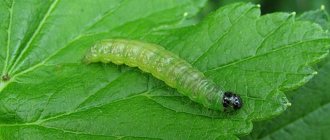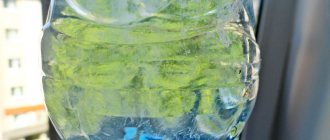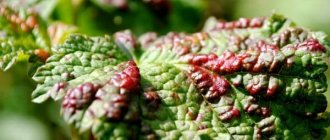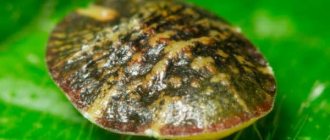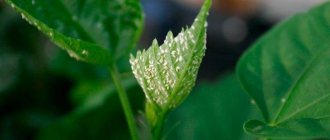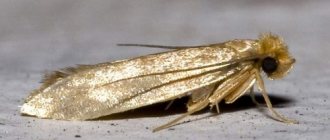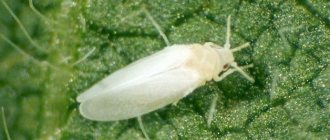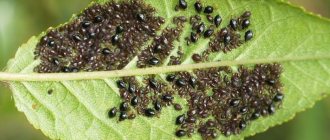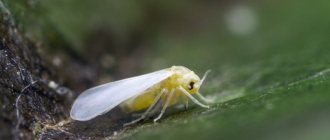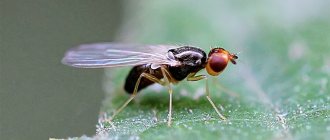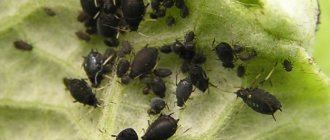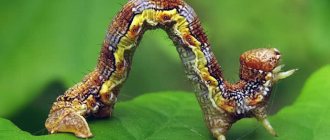There is a place for currant bushes in almost every area. But it’s not always possible to enjoy berries. This is due to numerous “freeloaders” - insects that also lay claim to the harvest. One of the most dangerous and malicious pests of berry crops is the moth. The adult individual itself does not cause much harm, but its offspring can cause serious damage and even leave them without berries at all. Therefore, the question of how to deal with currant moth is relevant for all gardeners on whose plots berry bushes grow.
Brief description of the moth family
The moth belongs to the division of small lepidoptera of the butterfly family. There are more than 6 thousand species of these insects. Some tropical representatives of moths reach sizes of up to 8.5 cm, but most have insignificant parameters.
Their front wings are triangular in shape, while their hind wings are more rounded and much larger. The colors of butterflies are varied and bright. Insects are active at night. Caterpillars live in grasses, causing significant damage to plantings.
Gallica
Gall midges are a type of small flying insects similar to mosquitoes. The affected area where the gall midge has settled on currants can be any part of the plant. Adults are 2 mm long and have a yellow-brown color. Initially white, as they develop the color of the caterpillars changes to red-orange, and at the last stage of growth it turns into red.
Swollen galls
There are three varieties of gall midge:
- Leafy ones that damage young leaves by eating and settling on them. A leaf damaged by leaf gall midges does not develop, curls and falls off. Young shrubby shoots are most susceptible to leaf gall midge invasions;
- Flower gall midges lay eggs in the ovaries of flowers, which leads to the death of the inflorescences, which acquire a spherical shape. Saturated larvae move from the bud to the soil;
- Stem gall midges select cracked fragments of the trunk of currant bushes for ovipositor. This happens at the end of the flowering stage. For nesting, the larvae choose a place under the bark, where huge colonies are formed. Fragments of bark inhabited by stem gall midges, as well as shoots, die.
While in the larval stage, each of the above representatives of the gall midge species overwinters in the upper layer of soil. Pupation of caterpillars begins with the onset of stable warming. With the transition of the bush to the flowering stage, mature individuals are activated.
Weevil
The bud weevil is a beetle with a gray color and belongs to the short-proboscis type. Representatives of these parasitic insects are characterized by a bisexual method of reproduction. Mature individuals eat the vegetative organs of buds and flowers. The place for laying eggs is located next to the currant planting. The development of bud weevil larvae occurs in fruits and stem tissues. Knowing how to prevent the appearance of weevils on currants and how to deal with this pest, you can prevent loss of yield.
All weevils are divided into two types:
- short-proboscis;
- long-proboscis.
leaf roller
The leaf roller is a 3-centimeter moth whose wings fold exactly horizontally. The larvae are yellow-green in color. The number of eggs laid at a time is about a hundred. The caterpillars are distinguished by a black head with rows of peculiar hooks on the sides of the body, which is devoid of hair. In addition to destroying leaves, leaf rollers also eat buds. The overwintering place for the currant leaf roller is leaves shrouded in cobwebs.
Signs of fire damage
Moth caterpillars infect the leaves of the plant, causing curling, changes in structure and wilting. The appearance of thin cobwebs, excrement and skins of caterpillars is observed. Upon careful inspection, hairy green caterpillars can be found in the foliage, and the ground around the plant is strewn with the remains of leaves and insect waste products. Losing its leaves, the plant quickly dries out and dies. Damaged currant berries turn brown early, and their tops begin to rot, after which the fruits fall off. If you do not fight the insects, you can lose almost the entire crop.
Why is it dangerous?
In addition to black and red currants, the moth attacks gooseberries and occasionally raspberries.
If effective measures are not taken in time, the pest can eat almost all the fruits. Thus, during periods of population explosion, insects can destroy up to 90% of the crop, causing irreparable damage to farmers. According to experts, one caterpillar can easily eat 10 currants and 6 gooseberries, and a small family can completely gnaw off an entire bush. The caterpillars very quickly attack the plantings and literally devour the berries from the inside, leaving the products of their vital activity in their cavity. Pests entangle currant leaves in a thick and sticky web, penetrate inside the fruit and eat away the pulp.
Methods for controlling currant moth
There are many ways to eliminate pests from currants. To do this, they use agrotechnical measures, treat the shrubs with chemicals, and also resort to folk remedies. The weather helps get rid of moths, since pests die from fungal diseases during rainy and warm summers.
Agrotechnical measures to combat moth
They are carried out from early spring to late autumn, and thanks to agrotechnical treatment, the plant becomes healthy and does not succumb to the influence of insects, and a bush weakened by weeds will suffer more from pest attacks. It is important to remove fallen leaves around the bush 2 times a year - in spring and autumn. It is necessary to promptly prune diseased branches and thin out shrubs. For better penetration of nutrients and air exchange, the plant is hilled and the soil around it is loosened.
Treatment
To eradicate butterflies and moth caterpillars on currants, the gardener will need the knowledge and ability to process the garden using several techniques. We will analyze each in detail, indicating the best solution recipes. Find out about the characteristics of Lorano grapes at this link.
Agrotechnical methods
Among this type of garden work, we highlight several main points:
- in the pre-winter period, we carry out shallow digging of the soil between the rows and loosen the soil under the bushes. The pupae lie at a depth of up to 40 mm; by raising them to the surface, we reduce the number of butterflies. They do not tolerate frost and dry soil;
- a layer of mulch makes it difficult for butterflies to rise in the spring, significantly reducing their numbers;
- treating the soil and bushes with boiling water in early spring helps destroy wintering insects;
- all pest-affected shoots, berries and foliage with cobwebs must be removed and burned outside the site;
- strong bushes are less susceptible to the spread of diseases and pests. Therefore, following the rules of complementary feeding and watering will help reduce the risk of moth appearing in the garden;
- the soil under the bushes should always be loose and moist. When loosening, we remove all weeds and root shoots;
- even a properly formed crown that provides good ventilation helps to cope with the problem.
Folk remedies
This method will repel butterflies and cope with pests at an early stage of damage to shrubs. Traditional plant medicine recipes are used to treat plants at the flowering stage and during harvesting. Spraying the bush or dusting all parts of the plant and the soil around the currant is used.
Chamomile
After the infusion has cooled, the currants are treated for preventive purposes immediately after the bushes begin to flower and the butterflies begin to fly. This material will tell you about the description of the grape variety Kesha.
Pyrethrum
Pyrethrum powder (dry powder from the Dolmatian chamomile variety) is used to spray on the surface of the bush and soil. Pyrethrum is poured into a fine sieve and, crushed, the dust is sprayed. Some gardeners recommend adding road dust to the powder, but it is impossible to say for sure that such a mixture is more effective. Treatment is carried out at intervals of 7 days.
Ash
Mustard
We spray the powder over the bushes, the caustic and bitter powder covers the surfaces of the berries and the caterpillars go looking for plants not treated with mustard powder. To prepare a solution for spraying, mix 50 g of powder with 5 liters of water and leave for 2-3 days. This solution can be used to treat bushes with ripe berries. Find out about growing and caring for Marinovsky grapes here.
Tincture of wormwood and tobacco
Tobacco dust and wormwood herb - 200 g are mixed in 5 liters of warm water, and leave the solution to infuse for 48 hours. We bring the volume to 10 liters and the infusion is ready for use. To improve the adhesion of the composition to the bark and berries, it is recommended to add 30-40 g of laundry soap to it.
Pine concentrate
Throughout the flowering phase, with an interval between treatments of 7 days, we use an infusion of pine concentrate, mixing 2 tbsp in a bucket of water. spoons of the product.
Elder
Planting near an elderberry bush or sticking several branches of a flowering plant into the crown of the bush will help scare butterflies away from currant bushes. To combat the onset of caterpillar infestation, treating all surfaces of the bush with an aqueous solution of elderberry flowers will help. After chopping 10 g of flowers, dilute the herb in a liter of water and let it brew for 24 hours.
If plants are treated against moths. It is recommended to carry out treatment with soda and other drugs late in the evening. The butterfly is nocturnal; contact agents will destroy or repel pests.
Chemicals
Treatment with these drugs is much more effective than folk remedies, but given that moth caterpillars infect the fruits of bushes, their use is possible as a preventive treatment of plants in early spring and in the pre-winter period when destroying pupated pests. Read about the Primitivo grape variety here.
Treatment in early spring
At this stage, the plants are treated with boiling water during the first warm days. After 7-8 days, the plants are sprayed with a solution of “topaz” or another inexpensive insecticide.
If the soil around the bush is treated with any systemic insecticide in early spring and all row-spacings are covered with plastic film, leaving no loopholes for butterflies to crawl out, this technique will destroy the butterflies, rid the garden of the invasion of moths and heat the soil under the bushes, ensuring the early development of the warmed-up root system of the bush.
Immediately before flowering, it is recommended to treat currants and gooseberries with a 0.5% solution of Kinmiks or 1% Iskra M.
Spring treatment of the garden against pests and diseases: how to spray fruit trees and berry bushes
After flowering
To treat plants at the stage of development and hatching of caterpillars in the ovary, it will be necessary to use contact insecticides. According to gardeners, it is preferable to spray currant bushes against the moth with solutions:
- 0.2% "Aktellika";
- 0.5% Kinmiks;
- 0.1% Iskra-M;
- 0.2% Fufanon or 3% Karbofos solution.
The drugs “Kilzar”, “Rovikurt”, “Tiovit Jet” have proven themselves well. The minimum waiting period is the same for all these solutions - at least 20 days. Only after this period can you eat the berries, having first washed them under running water.
During fruit development
This period of rapid reproduction and active feeding of growing caterpillars will require the use of folk recipes or biological preparations with a short waiting period. For green berries it is possible to use the following solutions:
- 0.3% “Fitoverma”, waiting period 2 days;
- 1% "Bitoxibacillin";
- for treating young caterpillars, it is recommended to use a 0.3% Lepidocide solution with a waiting period of 5 days;
- Among these preparations, we will also highlight the solutions “Agrovertin” and “Iskra Bio”.
These solutions are used to treat all types and varieties of currants and gooseberries against the gooseberry moth.
Prevention of moth on currants
Prevention of pest damage must be carried out throughout the year. In early spring, mulch the root area of the shrub. To do this, crushed stone, gravel are poured around the trunk, and roofing material is laid, which will not allow the moth caterpillars to get out of the soil after wintering. In summer, preventive spraying is carried out to destroy caterpillars and their nests.
In late autumn, it is necessary to dig up the soil, which will greatly harm the pupae overwintering in the ground. To prevent damage by insects, it is necessary to regularly prune diseased currant branches and remove weeds in a timely manner.
The most common pests
Ognevka
The most common one, the gooseberry moth, is a representative of the biological order Butterfly. It has small dimensions and gray wings. The location of the pupae of wintering moths is in the soil, under bush currant plantations, which complicates the process of controlling moths on currant bushes. Their appearance occurs in the spring when the air temperature is stable and warms up to +13°C. The cavities of currant bush flowers serve as a reservoir for the ovipositor. The number of moth individuals on one bush can reach two hundred. Caterpillars appear a week after laying eggs. You need to know what the currant moth cannot tolerate and how to deal with its appearance, otherwise its constant presence in the garden will lead to the death of the currant planting. Timely measures taken to combat the gooseberry moth will allow you to preserve the ripe crop.
Damage to gooseberry moth
Currant varieties resistant to fireweed
To date, there are no currant varieties that are completely resistant to the attacks of the moth. Currant varieties with early flowering and ripening berries suffer more from the pest. This is due to the early emergence of the pest from hibernation. However, there are some varieties of currants that the caterpillar is not very willing to eat. The currant variety “Ariadna” has the highest degree of resistance to various pests, which can be grown in both northern and southern regions.
All shrubs will be less damaged by insect pests if they are adequately adapted to the climatic conditions of their growth and the supply of sufficient moisture and sunlight to the plant.
All methods of combating currant moth are quite good and, if used correctly, will help get rid of the pest. It is important to combine several methods. For example, agrotechnical measures and treatment with chemical or folk remedies. A targeted integrated approach will help, if not “defeat” the harmful insect, then minimize the manifestations of its aggressive life activity.
Folk recipes with photos
If garden bushes are slightly damaged by a pest, it is better to treat them using folk remedies - they are the least harmless to plants. Most popular:
- Camomile tea. Pour 50 g of pharmaceutical chamomile into 5 liters of hot water, then cover the container with several layers of cloth and let it brew for 1-2 hours. Treat the plants with the resulting product during the flowering period after the butterflies have fled from their winter shelters.
- Wood ash. Fill a third of the container with wood ash and add water, then let it brew for 2-3 days. Filter the resulting infusion and dissolve laundry soap in it at the rate of 30-50 g per 8 liters of infusion. Treat the affected plants with the resulting product.
- Tincture of wormwood and tobacco. Leave 400 g of wormwood and tobacco dust in 10 liters of water for 2 days. The prepared infusion can be diluted with clean water and 30-50 g of laundry soap can be added to ensure better contact of the liquid with parts of the plant. Treat plants affected by insects with the product.
Decoction of tomato tops from pests
All parts of the plant are suitable for preparing a decoction: stems, shoots, leaves, dried or raw.
Take 3 kg of fresh chopped tops, pour in 10 liters of water, let it brew for 3-4 hours, then simmer over low heat for 30 minutes. After this time, cool the broth and strain. Before use, dilute with water in a ratio of 1:4. You will need less dry tops: 1 kg per 10 liters of water. Leave for 4-5 hours, then boil over low heat for 2 hours. Then cool and strain. Dilute the broth with water in a ratio of 1:3.
It is better to use a decoction of the tops immediately, but if necessary, you can store it for up to six months in tightly sealed glass bottles in a cool place.
For better adhesion, 30 g of laundry or green soap should be added to the broth before spraying (per 10 liters of solution).
Useful tips
Tip #1
The soil under currant bushes should always be moist and loose. During loosening, it is necessary to remove shoots and all weeds.
Tip #2
It is good to equip bird feeders in your garden. Birds are enemies of the moth and will help in its destruction.
Biological agents are not as toxic as chemical ones, so they cause much less harm to the soil, bushes and fruits
What does a flame look like?
In order to begin the fight to save the crop from the moth, you need to know what this insect looks like. It is also advisable to have an idea of his lifestyle and development cycle. Only in this case can you not only successfully get rid of the moth, but also reduce the likelihood of a pest outbreak.
Appearance
The moth family includes 6,200 species of butterflies. However, currants are most often affected by the gooseberry moth - a small butterfly with a wingspan of 24-36 mm and a body length of up to 15 mm. The head is small, conical, with short thread-like antennae. The color of the front wings is gray, inconspicuous, sometimes with a brown tint; along the edges there is a wide white oval stripe. The hind wings are monochromatic and have a lighter color.
Moth caterpillars reach a length of 8 to 14 mm before pupating, immediately emerging from pale yellow eggs. As the larvae grow, their color becomes richer and darker. There are blurry ring-shaped spots on the sides of the caterpillar's body. The caterpillar's head is black. The moth pupa reaches a length of up to 8-9 mm and has light or dark shades of brown.
Developmental phases and reproduction
The gooseberry moth overwinters in the pupal stage in the upper layers of the soil, fallen leaves and other shelters. Often in close proximity to currant bushes. The mass emergence of butterflies from their pupae begins in May, before the currant blossoms. Adult moths are more active in the evening.
About a week after departure, when currant flowers begin to bloom, butterflies lay eggs up to 1 mm in size. One clutch contains up to 200 eggs, from which caterpillars hatch within a week. They quickly spread throughout the plant and live on it until pupation.
Gooseberry moth: description of the pest
Squad gooseberry moth photo female
We are talking about a butterfly insect representing the order Lepidoptera. Wingspan from 24 to 36 mm. The color of the moth can be either brown-gray or dark brown. An oval white stripe runs along the costal margin. The forehead is slightly convex and covered with scales, which ultimately forms a cone shape. The butterfly's head is equipped with filament-shaped, short-ciliated antennae. At one time, a sexually mature female lays up to 200 eggs.
In one season, only one generation undergoes complete development. Although, if external conditions are favorable - the summer is dry and hot, then another facultative generation may appear. The insect overwinters in the state of a pupa, formed from a parchment-like material of brown color.
The larva is a gray-green caterpillar reaching 8-14 mm in length with a black head. The sides are decorated with round black spots with a shiny sheen.
When considering the question of how to spray gooseberries, you need to pay attention to currant bushes. The firebug will never miss these bushes either.
It is not the butterfly that is harmful to plants, but the caterpillar. It produces a web that weaves around the foliage, flower stalks and fruits of berry bushes. The diet of the moth larvae consists of the core of gooseberry fruits - it gnaws out all the internal contents. And currant berries are directly eaten from the outside. During its stay in the caterpillar state, the moth damages about 6 gooseberries, and about 15 currants. The spoiled fruits rot and fall off. As the population develops, large yield losses are possible.
Agrotechnical methods
No weeds under the bush and loosened soil
- We have already indicated that the moth overwinters in a cocoon, which it builds in the surface layer of soil immediately under the bush. This fact is another reminder of the need to periodically dig up the soil under the bush throughout the season, and closer to autumn it needs to be covered with 10-12 cm of soil. In the spring, the insect will not be able to overcome such a “bastion” and there will be no flight of butterflies, but in order for the bush to develop normally by summer, the earth bank must be raked.
- You will definitely not get the gooseberry moth close to it if you plant tomatoes or mint around the bushes.
- If damaged leaves or fruits appear, they must be removed manually and destroyed.
- Attracting ground beetles (the moth's natural enemies) to the site is also a reasonable solution. It’s not at all difficult to create favorable conditions for these useful bugs; just cover the ground around the bushes with roofing felt or roofing felt - they really love such shelters.
- The bushes should not be planted close to each other - good air circulation and plenty of sunlight are necessary.
"Old-fashioned" methods
Folk remedies will help fight the fire, although in unaddressed cases and with the timely detection of the “enemy”
We recommend paying attention to the following events:
Wood ash is the enemy of the moth
- Spraying with wood ash. You need to take 3 kg of ash and sift it through a fine-mesh sieve. The resulting powdery component is poured into a bucket (10 liters) of water. This composition is left alone for 48 hours. Next, you need to strain it and use it for its intended purpose - spray gooseberry and currant bushes.
- Dust, although a chemical preparation, has been used as a folk remedy for a very long time. You need to make a 12% aqueous solution from it and treat the ground around the bushes. And to consolidate the effect, after 8-10 days you need to scatter 50 g of dust powder under the bush.
- Infusions from tomato tops. It is necessary to spray three times every 7 days.
- The fight against gooseberry moth can also involve treatment with pine extract. It is prepared according to this recipe: 200 g of spruce or pine needles are poured into 2 liters of hot (not boiling water) water. This composition is infused covered for 7 days, with daily stirring. Spraying is carried out several times, previously diluted in a ratio of 1:10 with an aqueous composition.
- Mustard tincture. Mustard powder is used. 100 g of it is poured into a bucket of water. Infusion period – 48 hours. Before processing the berry bush, the composition must be filtered and diluted in a ratio of 1:2.
Preventive actions
Knowledge of the characteristics of their life cycle and natural factors will help gardeners destroy moths. Thus, in the summer heat, moth caterpillars do not have time to burrow into the upper layers of the soil and die. The air temperature does not depend on the person, but some other measures can be taken to protect currants from the pest.
Regular walking around and checking the bushes will help you notice signs of insects in time, as well as destroy caterpillars and fruits damaged by them. Timely cleaning of bushes will protect plantings from attack by pests. It is recommended to check other crops growing in the same area. Raspberry and gooseberry bushes are very popular with the moth and can provoke the spread of the pest and its appearance on currants.
Treatment of currants with chemicals
Chemical preparations for moth
The fight against moth brings excellent results if chemicals are used. You need to choose insecticides based on the period of currant development (before flowering, after flowering, during fruit ripening). The following chemicals should be selected according to development phases:
- Before flowering in early spring, “Kinmiks” should be used (working solution concentration – 0.05%); Iskra M (0.1%). Spraying with these preparations will get rid of a significant number of caterpillars and protect the fruits from damage.
- After flowering, it is recommended to spray currants with Fufanon (0.2%), Actellik (0.2%), and Karbofos (0.2%).
- During the period of fruit ripening, the use of chemicals is strictly prohibited, but in order to protect the berries from pests, it is recommended to spray with biological products: “Fitovermom” (0.3%), “Bitoxibacillin” (1%), “Lepidocide” (0.3%) .
Treatment against diseases and pests
In early spring, after the buds begin to bloom and a week after treating the bushes with Bordeaux mixture, you can spray the plants with an infusion of onion peels. The second treatment is carried out immediately before the currants begin to bloom. The volume of product used depends on the size of the plant and on average is 1 liter per bush.
Important! When using onion peels, you don’t have to worry about using too much of the product, since it is completely safe for both people and crops.
Spraying should be carried out in dry weather, early in the morning or late evening, so that the plants are not exposed to direct sunlight.
Spraying currants against aphids
If aphids appear on currant bushes, you need to prepare a special solution based on onion peels. It shows high efficiency, especially at the initial stage of the lesion.
For infusion, you need to pour 200 g of purification into 10 liters of warm water and leave for 15 hours. Next, you should strain this product and spray the affected bushes, without further diluting with water. It is recommended not to overexpose the infusion, otherwise the content of nutrients in it will decrease and bacteria may develop.
A week after the procedure, it is necessary to process the culture 2-3 more times.
Biological agents
During the period of fruit development and ripening, the use of products based on biological products is allowed. Among them: Fitoverm, Agravertin, Iskra Bio (Akarin) and others. They are much less toxic than chemicals and pose less of a threat to plants and fruit quality. They may act with a delay, but are generally more effective than other means.
Interesting! Natural enemies of the gooseberry moth are ground beetles that feed on caterpillars, tahini flies and parasites that lay eggs in the caterpillars of the pest. The presence of these insects on the site reduces the butterfly population and inhibits its reproduction.
